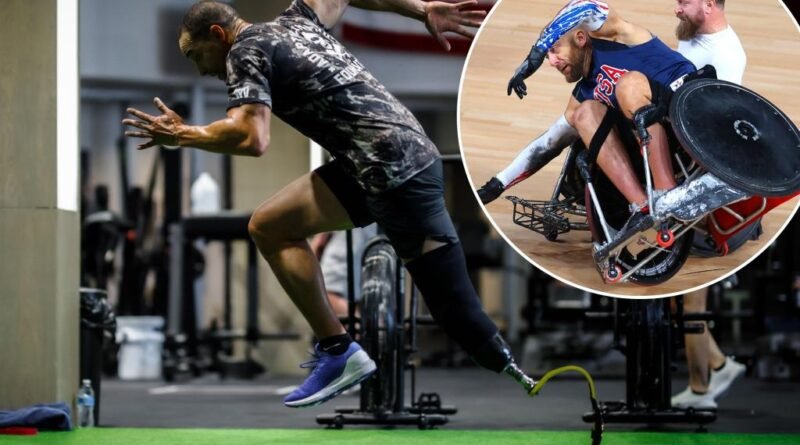Athletes in Paris’ Paralympic Games Overcome the Odds

Kintsugi is the Japanese art of reconstructing broken pottery by melding the pieces back together with a lacquer dusted with powdered gold, silver, or platinum.
Because breakage is part of an object’s history, kintsugi recognizes, even celebrates, the cracks.
An act of re-creation, kintsugi transforms the seemingly shattered pieces into a new, artistic masterpiece.
Today, many of us feel broken. Like the pottery restored by Japanese artists, human beings often need more than just some paste and a quick fix. We need restoration, healing, and, yes, a little kintsugi.
Nowhere is this clearer than in my world of adaptive sports, which will be on full display at the Paris Paralympic Games, which run through Sept. 8.
Adaptive athletes take missing limbs, combat injuries or amputations and find ways to compete at the highest levels.
The accomplishments you’ll see over the next weeks are sure to be astounding.
But they often started with a decision to not be defeated by limitations, but to embrace and work with them.
I saw this years ago when, as an athletic trainer, I began training Army Staff Sergeant Travis Mills, a quadruple amputee. Before working with Travis, I had never met an amputee in a traditional gym.
Why? I learned it was more than just the absence of adaptive training equipment. It was the stares, the awkward silences, even the obligatory politeness. But mostly it was the stares.
Travis’ resolve in the face of that adversity impressed me. It’d be easy for athletes like Travis to see themselves through a lens of impairment. But Travis chose to see himself differently.
I had gazed through the lens of impairment myself years earlier. As the final pick of the 2008 NFL draft, I was labeled “Mr. Irrelevant,” a moniker that could have defined my entire career — had I let it.
Instead, I labeled myself a starting linebacker, trained like one and played like one for the St. Louis Rams and Seattle Seahawks until I was one.
And while a draft selection is a far cry from losing limbs, I knew I could offer something more profound and permanent than conventional training: kintsugi adapted for the adaptive athlete.
So began a radical vision of athletic training, bridging the chasm from basic functional rehabilitation to adapted sports.
My team’s approach to adaptive training includes finding methods for equipment to work within an athlete’s particular circumstances, of course. But more so, we seek to empower athletes with a different mindset.
The training program consists of honoring each individual’s journeys, working with a “tribe” of other athletes and showing up — because it’s good for them and it’s good for the tribe. Most importantly, we believe in our athletes until they believe in themselves.
Adaptive athletic training mixed with kintsugi has changed the life of Brandi Fields, a multitalented athlete from Missouri. Brandi was shot multiple times by her stepfather, leaving her paralyzed from the chest down. While she recovered some physical strength and mobility in a rehabilitation program, Brandi’s mental recovery lagged.
But by training with a mindset of recreating herself into something new, Brandi has risen above and accomplished more than she ever thought possible. She wants to become a certified adaptive trainer herself and help others just like her.
This training method works, anecdotally and based on metrics. Thanks to partners like the Stand Together Foundation, our athletes have seen an 89% reduction in overall pain, a 36% increase in psychological health and wellness, and a 26% increase in self-confidence.
I’ve seen my athletes go to the highest heights of their sports in the Paralympic Games, Ty Turner and Matthew Brewer to name a few. Training adaptive athletes to defy the impossible is a reward in itself. But training them to see themselves as strong, able and worthy outweighs the medals they compete for.
During the 2024 Paralympic Games, I urge you to watch adaptive athletes competing through the kintsugi lens. See the cracks as essential elements of the whole story. Use that kintsugi lens to view others not as broken vessels, but as masterpieces-in-progress.
David Vobora is the founder of Adaptive Training Foundation and a former NFL linebacker.




